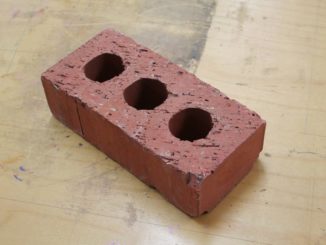
Fair Use/Fair Dealing
In order to understand 1978’s DOA the Third and Final Report of Throbbing Gristle by Throbbing Gristle (Yorkshire slang for, well, a pulsating male member) it’s important to have an understanding of TG and their origin.
Widely cited as the Grandfather of industrial music, frontman Genesis P-Orridge (born Neil Megson), vocalist and multi-instrumentalist Cosey Fanni-Tutti (born Christine Newby), Sleazy (Peter Christopherson) and Chris Carter (Chris Carter…) rose from the demise of what’s best described as the boundary-pushing arts-collective COUM, established in Hull in the late 1960s.
Riding the flotsam from the tidal wave of hippy culture, the arts collective didn’t do badly for themselves, securing grants from various organisations and paid-for trips to various European countries. However, with exhibitions going so far as the undertaking of sexual acts on stage (between P-Orridge and Fanni-Tutti using a double-ended implement…) the group was ‘challenging’ enough to spark a debate in the House of Commons regarding the funding decisions made by the British Arts Council.
From the demise of COUM came Throbbing Gristle. Their second album DOA… threw the spanner in the works of what to expect (from an album, from music, from the group, from life?).
This is not an album for the faint-hearted. The most accessible tracks found on the album are a prog-electronic number (AB/7A), listed at number 09 and almost 30 minutes in; and the four-minute ominous and horror-film soundtrack-sounding “E-Coli” at track 10 (it wouldn’t have sounded out of place in the lonely shots on Westminster Bridge in 28 Days Later).
Mastering overwhelming, suffocating cloaks of sound, ‘songs’ is generally too loose a noun to describe the content of the album. Nestling uncomfortably somewhere between “output” and “pieces”, the listener is taken on a sense-deadening journey of fingernail-blackboard-scratching across fourteen ‘tracks’ ranging from a previous single sped up to a duration of 16 seconds (United) and answer machine-captured death threats left on P-Orridge’s machine concerning the selling out of the band by making anything remotely close to being commercially viable enough to even be a single in the first place.
This here gives us a large clue to understanding the band and album: self-indulgent tosh created by grinning wankers thinking they’re changing the world to be listened to by self-important wankers thinking they’re listening to something changing the world. As Laurie Lee so beautifully put it: it’s protection through exclusivity.
Just like COUM ‘pushed artistic boundaries’ by fucking on stage and calling it art, this album takes seemingly random sounds and presents it as art.
It’s no argument that the band, and album, had influence: it can be heard clearly in the likes of far more accomplished artists such as Squarepusher and Aphex Twin, whilst fans include the likes of adult entertainment actress Sasha Grey.
The most commendable part of the album is that it was created in the late 1970s when analogue technology would’ve meant significant time and involvement to create such an industrial-sounding album.
To anybody though without a keen interest in alternatively created music there is very little which will hold any interest. Whilst there’s respect to be given for such a bold attempt at pushing musical boundaries, overall the album at best leaves one isolated, confused, disconnected. At worst, or, after more than two listens, it resonates with one the same way traffic does: it’s anxiety-inducing, unrhythmic, polluting and disorientating.
© Cromwell’s Codpiece 2023



